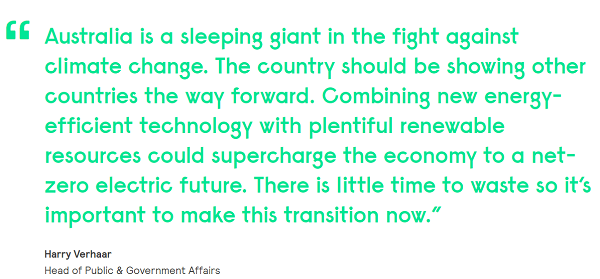Connected LEDs can offer significant energy-efficiency benefits
In several ways, Australia is at the coalface of the climate crisis.
Australia’s coal industry plays an outsized role in the economy, employing 46,000 people and generating over 50% of the country’s electricity. The country is now dealing with the effects of this fossil fuel. Australia’s average temperature has increased by over 1.47°C since 1910, and extreme weather events—including wildfires, flooding, and drought—have all increased in recent decades.
On the positive side, Australia is ahead of much of the world in the transition to a net-zero economy. As an island continent blessed with an abundance of sunshine and open land, ample opportunities to build renewable power exist. Even though previous federal governments have not prioritized climate change-related policies, 35.9% of Australia’s electricity came from renewable sources in 2022. Multiple large-scale wind and solar power plants are under construction.

Energy efficiency is one area which needs attention. A recent government assessment concluded that “Australian homes are largely inefficient.” The Albanese Government, which came into power in 2022, has put net-zero ambitions back on the agenda, making AUS$1.3 billion available for energy-efficiency upgrades. Speaking to the BBC after his election victory in 2022, Mr. Albanese pledged to “end the climate wars in Australia. . . . Australian businesses know that good action on climate change is good for jobs and good for our economy, and I want to join the global effort."
Charting a way to net zero can be difficult even with consistent policy-making and high levels of investment. According to the Commonwealth Scientific and Industrial Research Organisation (CSIRO), energy production, residential and commercial fuel use, and transportation are among the biggest contributors to Australia’s overall greenhouse gas emissions. A good way forward in these sectors seems to be increasing energy-efficiency on both the supply and demand sides—using clean energy to power heat pumps and electric vehicles, for example. In practice, however, the steps required to proceed in this direction are not always clear. Where will all the extra electricity required come from?
Making lighting more energy-efficient should definitely be part of the answer. According to our own research and simulations,* roughly 50% of all light points in Australia are energy-inefficient incandescent and fluorescent. Switching these to connected LED could significantly impact both the country’s economy’s carbon footprint and its finances. Our internal modelling suggests that shifting all conventional light points in Australia to connected LED could save up to AUS$8.1 billion each year, while reducing CO2 emissions by an estimated 7.9 million tons annually, equivalent to the emissions saved by cancelling all cross-continent passenger flights between Melbourne and Sydney for the next 10 years.
Crucially, connected LED lighting frees up electricity that can then be used to power other resources. According to our own simulations, for example, the estimated energy saved by shifting all conventional light points to connected LED in Australia could power as much as 3.8 million heat pumps, 4.4 million electric vehicles, or 5.2 million electric cooking units each year.


Climate change has become ever-present in recent years, with Australia’s major towns and cities battered by constant flooding and engulfed by wildfires. An important part of any solution is to address the way people use and waste energy across the entire economy. Small but effective steps to help save energy through LED lighting and other connected technologies will free up electricity that can be used elsewhere while helping to reduce the carbon emissions driving extreme weather events.
TrendForce 2023 Global LED Lighting Market Analysis-1H23
Publication dates: February 10, 2023; July 31, 2023
Language: Traditional Chinese/English
File format: PDF and EXCEL
Number of pages: 100 (in each publication)
If you would like to know more details , please contact:





 CN
TW
EN
CN
TW
EN





